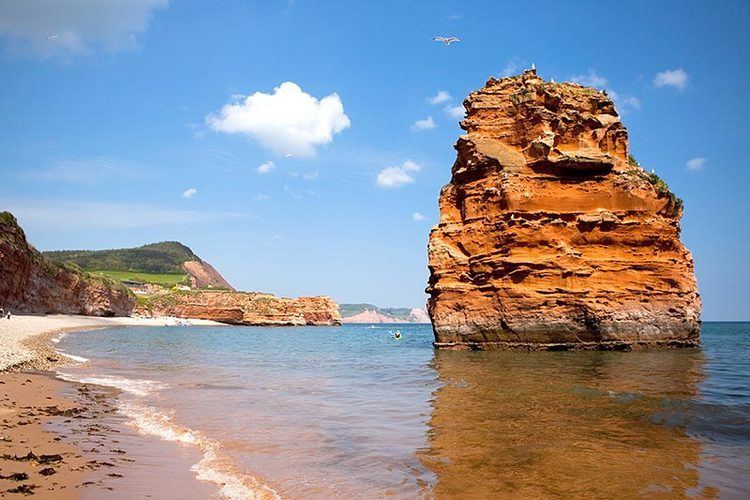 | ||
Similar Orcombe Point, Otterton Mill, Jurassic Coast, Aylesbeare Common, Old Harry Rocks | ||
Ladram bay south devon dji phantom 4 stock
Ladram Bay is a secluded bay with pebble beach, between the coastal towns of Budleigh Salterton and Sidmouth, on the south coast of Devon, England.
Contents
- Ladram bay south devon dji phantom 4 stock
- Map of Ladram Bay United Kingdom
- Ladram bay holiday park
- LocationEdit
- Jurassic CoastEdit
- GeologyEdit
- References
Map of Ladram Bay, United Kingdom
Ladram bay holiday park
LocationEdit
Ladram Bay lies about 11 miles southeast of the city centre of Exeter and just over 1 mile east of the village of Otterton. Ladram Bay lies just under 2 miles southwest of Sidmouth and about 2.5 miles northeast of Budleigh Salterton. Directly southwest of Ladram Bay are Smallstones Point and Chiselbury Bay. To the east is a hill called High Peak and below the hill are the Hern Point and Big Picket Rocks.
The holiday park at Ladram Bay is the second largest holiday centre in Devon. It was started by FWS Carter in 1950. It hosts the site of the first Digital TV Transponder in the United Kingdom.
Jurassic CoastEdit
The Jurassic Coast stretches over a distance of 96 miles from Orcombe Point near Exmouth, in the west, to Old Harry Rocks near Studland, in the east. The coastal exposures along the coastline provide a continuous sequence of Triassic, Jurassic and Cretaceous rock formations spanning approximately 185 million years of the Earths history. The localities along the Jurassic Coast includes a large range of important fossil zones.
GeologyEdit
Among the most impressive sights along the Jurassic Coast are the sea stacks at Ladram Bay. The sandstones contain numerous vertical fractures and joints that were formed deep in the Earths crust during past mountain building periods. The sea picked out these planes of weakness to form caves and natural arches that have since collapsed to produce sea stacks. The “Otter Sandstone” that forms the cliffs and sea stacks were deposited in a hot dry climates in the Triassic Period about 220 Million years ago. The stacks are composed of the same rock, which is relatively soft, but they have a harder band of sandstone at their base which prevents their rapid erosion by the sea. The striking red colour of the rock is caused by iron oxide, which tells us that the layers were formed in a desert. The presence of ripple marks and channels in the sandstones, together with the remains of the long-extinct plants, insects, fish, amphibians and reptiles, show that the desert was crossed by fertile river valleys.
The “Otter Sandstone” is the richest source of Triassic reptile remains in Britain and one of the most important in the world. At the south-west end of the bay, the most common fossils in the sandstone are networks of vertical, tube-like carbonate petrifactions (rhizocretions): these represent the roots of plants that were able to survive in the harsh dry climate of the Triassic Period.
The bay is sited on the same band of Sandstone that forms the oil reservoir at the Wytch Farm oilfield on the Isle of Purbeck.
